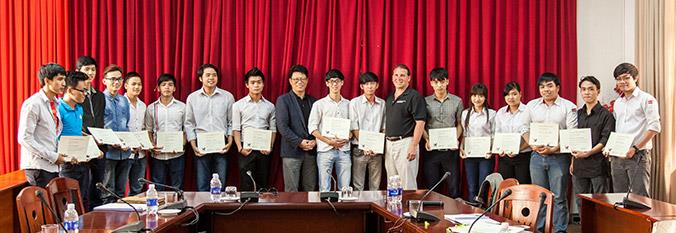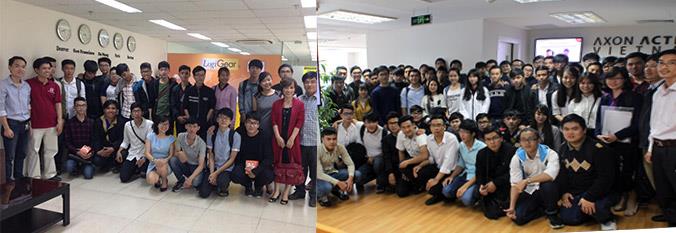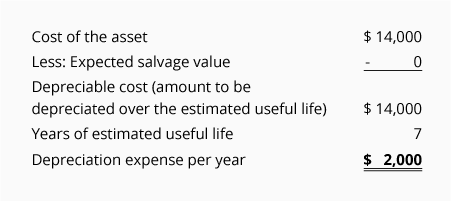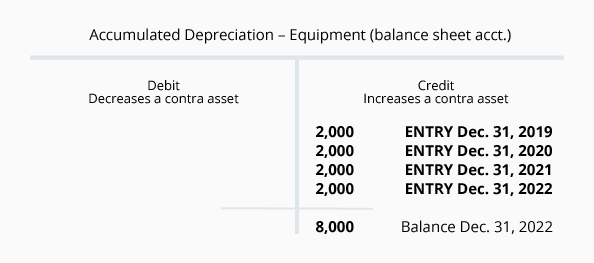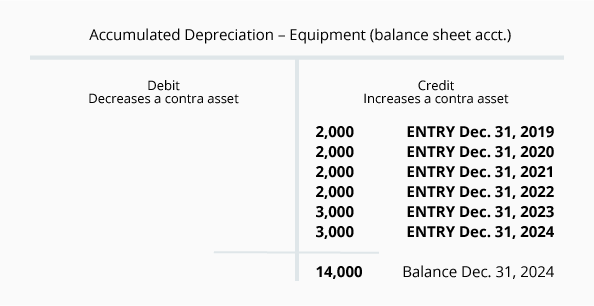Depreciation
Use of Estimates
Examples of Estimates
The calculation of depreciation (shown at the end of Part 1) included two estimates:
- Salvage value. Salvage value is the estimated amount that a company will receive when it disposes of an asset at the end of the asset's useful life. Often the salvage value is estimated to be zero. However, we assumed $500 in order to demonstrate how an amount would be handled. Salvage value is also referred to as disposal value, scrap value, or residual value.
- Useful life. The useful life of an asset is an estimate of how long the asset will be used (as opposed to how long the asset will last). For example, a graphic artist might purchase a computer in 2012 and expects to replace it in 2014 with a more advanced computer. Hence the graphic artist's computer will have an estimated useful life of 2 years. An accountant purchasing a similar computer in 2012 expects to use it until 2016. The accountant will use an estimated useful life of 4 years when computing depreciation. Both the graphic artist and the accountant are correct—the graphic artist in using 2 years and the accountant in using 4 years—even if the computers will be in working order for many years after their useful lives end.
Changes in Estimates
Whenever estimates are used in accounting, it is possible they will change as time moves forward. For example, a company bought a machine for $14,000 on January 1, 2008. At the time it was estimated to have no salvage value at the end of its useful life estimated to be 7 years. The company used straight-line depreciation. In 2012 the company realizes that technology will cause the machine to be obsolete by December 31, 2013 and there will be no salvage value at that time. Instead of the original useful life of 7 years, the company now estimates a total useful life of only 6 years (January 1, 2008 through December 31, 2013). This change in the estimated useful life affects only the current and future years. In other words, in this example the depreciation for 2012 and 2013 will be affected. The depreciation already reported for the years 2008, 2009, 2010, and 2011 cannot be changed. Any amount not depreciated as of December 31, 2011 will have to be depreciated over the years 2012 and 2013.
Let's first calculate the straight-line depreciation using the estimates in January 2008:
In the T-accounts we can see the cost of the Equipment $14,000 and the Accumulated Depreciation of $8,000 as of December 31, 2011:
These accounts show that $6,000 ($14,000 - $8,000) remains on the books at December 31, 2011 and there are only two years remaining (2012 and 2013) in which to depreciate the remaining $6,000. The remaining $6,000 will be divided by the 2 years remaining and will result in $3,000 of depreciation in each of the years 2012 and 2013.
In general journal format the entries will be:
At the end of 2013 the Accumulated Depreciation account will look like this:
Note that the depreciation amounts recorded in the years 2011 and before were not changed.
Accelerated Depreciation
What Is It?
Accelerated depreciation is an alternative to the straight-line depreciation method. Compared to the straight-line method, accelerated depreciation methods provide for more depreciation in the early years of an asset's life but then less depreciation in the later years. Under any depreciation method, the maximum depreciation during the life of an asset is limited to the cost of the asset. The difference in depreciation methods involves when you will report the depreciation. It's a matter of timing. Again, the total depreciation during the life of the asset is the same regardless of the depreciation method used.
As stated earlier, most companies use the straight-line method of depreciation for their financial statements. It is easy to compute and to understand. With straight-line depreciation the company will have the same amount of depreciation in each of the years of the asset's life. Accelerated depreciation will mean larger Depreciation Expense in the early years of the asset's life and then smaller Depreciation Expense in the later years. This larger expense in the earlier years will mean the company will report less profits in the earlier years of an asset's life (and greater profits in later years). Generally this is not appealing to most companies. As a result most companies will opt for the straight-line depreciation for their financial statements.
However, using an accelerated depreciation method on the company's income tax returns is very appealing. Higher depreciation in the early years of the asset means immediate income tax savings. Smaller depreciation in later years is far into the future. Generally, it is better to take the income tax savings sooner rather than later.
Fortunately a company is permitted to use straight-line depreciation on its financial statements and at the same time it can use accelerated depreciation on its income tax returns.
Various Accelerated Depreciation Methods
There are various methods of accelerated depreciation. Here are some of them:
- Double-declining balance (also known as the 200% declining balance)
- 150% declining balance
- 125% declining balance
- Sum-of-the-years' digits
» Tin mới nhất:
- Những Website Check Lỗi Ngữ Pháp Tiếng Anh Chất Lượng (18/05/2024)
- The writing process and assessment (18/05/2024)
- Những kinh nghiệm làm đồ án dành cho sinh viên kiến trúc (18/05/2024)
- Vai trò của các công cụ khuyến mãi đối với hành vi tiêu dùng (18/05/2024)
- Quyết định đầu tư chứng khoán và các mô hình nghiên cứu (18/05/2024)
» Các tin khác:
- Sự độc lập của Ngân hàng Trung ương và một số gợi ý chính sách cho Việt Nam (Phần 2) (17/03/2015)
- Sự độc lập của Ngân hàng Trung ương và một số gợi ý chính sách cho Việt Nam (phần 1) (17/03/2015)
- How to Determine Bad Debts Expense for an Income Statement Using a Cash Budget (17/03/2015)
- Lao động cưỡng bức - Nghiên cứu từ góc nhìn phát triển toàn diện (P.2) (17/03/2015)
- Lao động cưỡng bức - Nghiên cứu từ góc nhìn phát triển toàn diện (P.1) (17/03/2015)
- How to Forecast and Budget Sales (17/03/2015)
- Hệ thống Rider (17/03/2015)
- Môi trường làm việc ở Nike (17/03/2015)
- Thông tư số 200/2014/TT-BTC và những thay đổi so với Quyết định số 15/2006/QĐ-BTC (17/03/2015)
- Những khoản chi không được tính vào chi phí hợp lý khi kê khai thuế thu nhập doanh nghiệp (17/03/2015)



